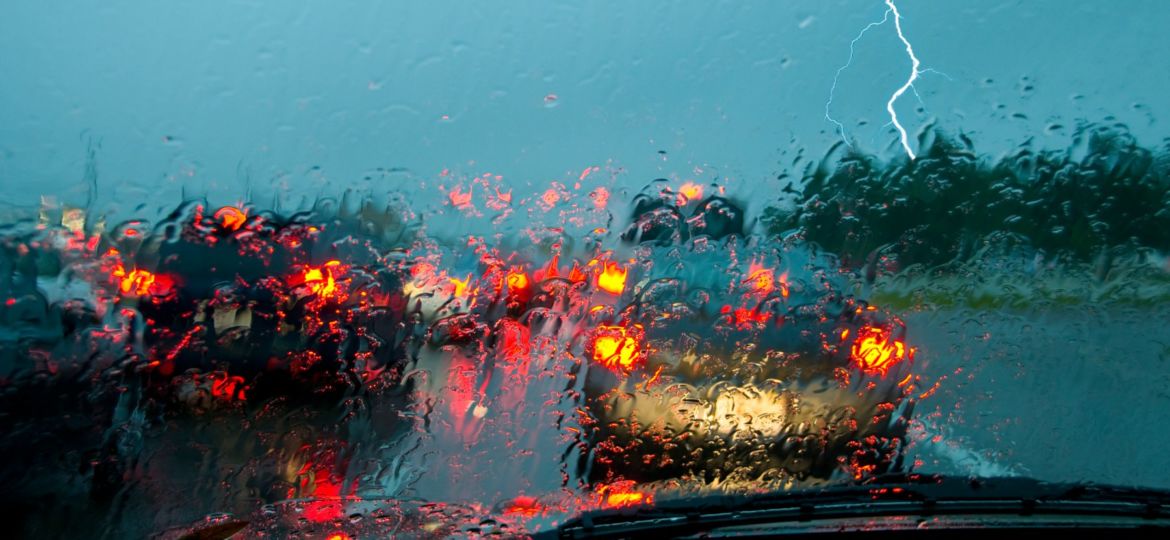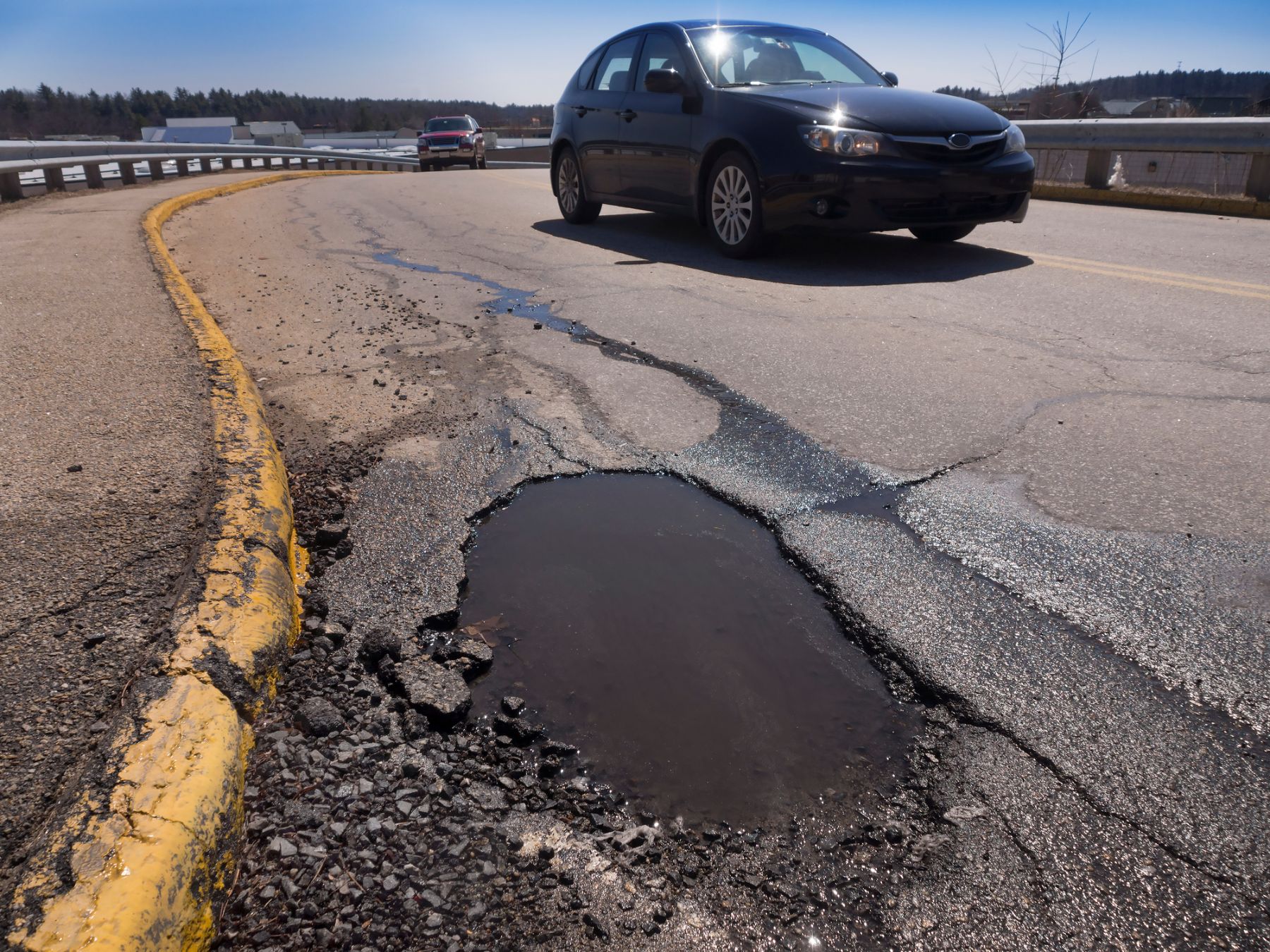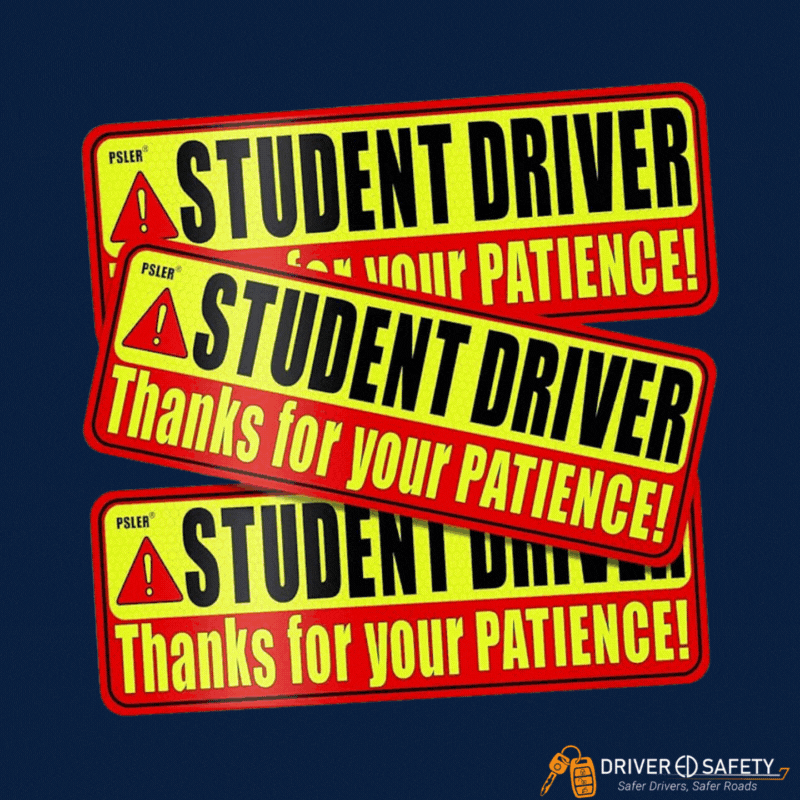
Rain, rain, go away! Driving in the rain—whether it’s a drizzle or a downpour—is one of the worst driving conditions we encounter regularly here in the Midwest. In fact, if you’re going around 35 mph, it only takes 1/12th an inch of rain to hydroplane. Since rainy conditions like heavy downpours and slick roads are directly associated with higher accident rates, knowing the safety precautions can help you avoid a potential accident. Let’s review some best practices for safely driving in the rain.
Assess the Severity and, If Possible, Wait Until The Weather Improves
If the weather conditions are making you uncomfortable, determine if you can postpone your trip or commute. This way, you can wait until the weather improves, and you won’t have to add anxiety to your trip. For instance, if it’s raining so hard that you can’t see across the street, use your better judgment and wait to drive. Whatever you might be late to is far less important than your safety and well-being! There’s no reason to put yourself in potential danger if commuting in wet conditions is avoidable.
Remember that getting mentally prepared to drive in challenging weather conditions can take time. The good news is, that the more you do it, the less anxiety you will have surrounding driving. Confidence and comfort come with experience over time, so be patient with yourself, and don’t get discouraged if you don’t quite feel ready to hit the road when it’s raining.
Keep It Slow and Steady
Not only should you go the designated speed limit when driving in wet weather conditions, you should also practice driving much slower than usual if your visibility is limited. Wet roads are dangerous because the rain creates incredibly slick conditions, and on top of that, your vehicle’s braking distance is much slower in the rain. Driving slowly and cautiously is the best way to keep you and others safe. If other drivers want to go a bit faster—they can go around you! Just make sure that if you decide to reduce speed you get over into the right-hand lane, so other cars are able to pass you.
Reduced speed is also critical to avoid hydroplaning in rainy weather. This is when your vehicle slides uncontrollably on the wet road. If this happens to you, do not slam on the brakes! The best thing you can do is ease off the accelerator and continue driving steadily in the direction you need to go, steering no more than what is necessary.
Beware of Standing Water
It’s important to know that hydroplaning can also occur when driving through standing water. To prevent this altogether, try to avoid driving through places where standing water has collected—whether that be big puddles, shoulders of the road, or streets with poor drainage systems. Another example would be if you’re driving along a three-lane highway and you notice large pools of water building up along the right lane, switch to the other clearer lanes instead for a lower risk of sliding.
Let’s not forget about those sneaky potholes that seem to pop up out of nowhere! Beware of pothole puddles, which are typically hard to spot in the distance since they mimic regular puddles. Although it’s not always possible to dodge these pothole puddles, the slower you cross them, the better the outcome for you and your vehicle. Without taking caution first, you could accidentally do severe damage to your vehicle.
Double Check Your Car’s Equipment
This is a huge one! Preferably before you have to drive in the rain, check up on your car’s equipment. Check your headlights, taillights, and windshield wipers to make sure everything works as it should. And don’t forget to check the tread of your vehicle’s tires, as balding tires can severely reduce traction on wet roadways. Traction is your best friend when it comes to driving safely in the rain, so think about getting some all-weather tires or relatively new tires with deep treads.
Although this step is optional, using a water-repellent spray can make a huge difference in your driving experience. Products like Rain-X are great for preventing a blurry or foggy windshield. However, keep in mind that using these products should be a part of your regular car maintenance routine and work best if you apply them prior to inclement weather. You can also purchase windshield wipers suited for all weather protection and a bit more durable than your average wipers. It’s all about preparation!
Ventilate Your Car
Rain causes humidity levels to increase, which can make your vehicle’s windows become foggy and pretty difficult to see out of. Most modern automobiles have built-in ventilation systems that include a function to reduce the fog that forms on the interior of your windows and windshield. If your car doesn’t have this type of mechanism, you can try to roll your windows down a bit to allow some ventilation. If conditions get too bad and you can’t see out of your windows, however, be sure to pull over somewhere safe and give your windshield a good wipe down with your spare towel.
Drive Safer With Driver Ed Safety
At Driver Ed Safety, we help students develop effective defensive driving and behavioral patterns by using the foundational concepts of targeting, visual reference points, zone control, and the intended path of travel.
Learn more about our open enrollment Online Course, or register for Behind the Wheel lessons.













